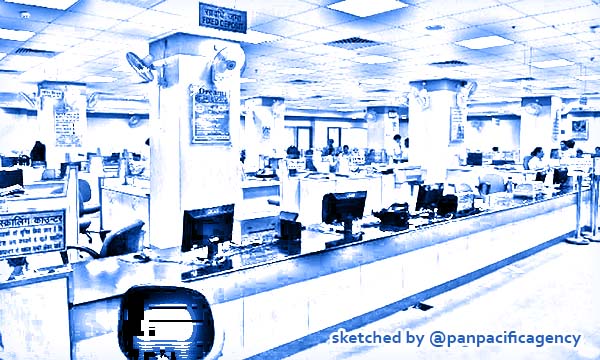India’s slowing economy worries state-run banks

A state-run Allahabad Bank branch in New Delhi. Photo: AFP. Sketched by the Pan Pacific Agency.
NEW DELHI, Jun 3, 2019, Asia Times. The slowing of India’s economy could reverse the fortunes of state-owned banks as they expect a few more corporate borrowers to go bust. There is a concern that with the gross domestic product slowing to 5.8%, their credit exposures could turn toxic in sectors such as agriculture, real estate and non-banking finance companies, reported the Asia Times.
The combined operating losses of state-owned banks were over 500 billion rupees (US$7.2 billion) in the March quarter. Though there has been an improvement in the asset quality, it could deteriorate if some companies are bankrupted or fetch low values following the insolvency process, Financial Express reports.
The Indian government has infused around 2 trillion rupees ($28.8 billion) over the past two years, a large part of which has been used to increase provisioning. But most state-owned banks continue to have poor asset quality and this has upset their ability to disburse loans. When compared with privately owned banks, their credit to deposit ratio is much lower.
While state-owned banks have set aside capital for stressed accounts such as Bhushan Steel, Electrosteel Steels and Monnet Ispat, there remains concern over exposures to Jet Airways, entities related to Infrastructure Leasing & Financial Services (IL&FS) group and some non-banks.
State Bank of India, the country’s largest, has succeeded in bringing down gross non-performing assets by 23% year-on-year to 1.73 trillion rupees ($24.9 billion). It claims to have a grip on slippages.
United Bank of India, which turned profitable in Q4FY19 after seven consecutive quarters of losses, saw the highest reduction in bad loans. Its gross NPAs fell 27% year on year to 120 billion rupees ($ 1.73 billion).